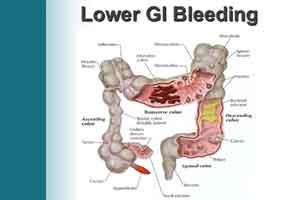- Home
- Editorial
- News
- Practice Guidelines
- Anesthesiology Guidelines
- Cancer Guidelines
- Cardiac Sciences Guidelines
- Critical Care Guidelines
- Dentistry Guidelines
- Dermatology Guidelines
- Diabetes and Endo Guidelines
- Diagnostics Guidelines
- ENT Guidelines
- Featured Practice Guidelines
- Gastroenterology Guidelines
- Geriatrics Guidelines
- Medicine Guidelines
- Nephrology Guidelines
- Neurosciences Guidelines
- Obs and Gynae Guidelines
- Ophthalmology Guidelines
- Orthopaedics Guidelines
- Paediatrics Guidelines
- Psychiatry Guidelines
- Pulmonology Guidelines
- Radiology Guidelines
- Surgery Guidelines
- Urology Guidelines
Management of acute upper GI bleeding-Updated guidelines

An international multidisciplinary group of experts has updated the Guidelines on the management of acute upper gastrointestinal bleeding. This is an update to the 2010 International Consensus Recommendations which has been published in the Annals of Internal Medicine. The update includes recommendations on managing patients on antiplatelet or anticoagulant therapy and on use of endoscopy and new therapeutic approaches.
The guidelines also address the issue of pharmacologic management of acute upper gastrointestinal bleeding. They strongly recommend that patients with bleeding ulcers and high-risk stigmata who have undergone successful endoscopic therapy should then receive an intravenous loading dose of proton pump inhibitor (PPI) therapy, followed by continuous intravenous infusion.
Recommendation Statements for UGIB
Resuscitation, Risk Assessment, and Pre endoscopy Management
- For patients with acute UGIB and hemodynamic instability, resuscitation should be initiated.
- For patients with acute UGIB, we suggest using a Glasgow Blatchford score of 1 or less to identify patients who are at very low risk for rebleeding or mortality and thus may not require hospitalization or inpatient endoscopy.
- For patients with acute UGIB, we suggest against using the AIMS65 prognostic score to identify patients who are at very low risk for rebleeding or mortality and thus may not require hospitalization or inpatient endoscopy.
- In patients with acute UGIB without underlying cardiovascular disease, we suggest giving blood transfusions for those with a haemoglobin level of less than 80 g/L.
- In patients with acute UGIB and underlying cardiovascular disease, we suggest giving blood transfusions at a higher hemoglobin threshold than for those without cardiovascular disease.
Endoscopic Management
- For patients admitted with acute UGIB, we suggest performing early endoscopy (within 24 hours of presentation).
- For patients with acute UGIB at high risk for rebleeding or mortality, the consensus group could not make a recommendation for or against performing endoscopy within 12 hours versus performing endoscopy later.
Secondary Prophylaxis
- In patients with previous ulcer bleeding receiving cardiovascular prophylaxis with single- or dual-antiplatelet therapy, we suggest using PPI therapy versus no PPI therapy.
- In patients with previous ulcer bleeding requiring continued cardiovascular prophylaxis with anticoagulant therapy (vitamin K antagonists, DOACs), we suggest using PPI therapy versus no PPI therapy.
- For patients with acutely bleeding ulcers with high-risk stigmata, we recommend endoscopic therapy with thermocoagulation or sclerosant injection.
- For patients with acutely bleeding ulcers with high-risk stigmata, we suggest endoscopic therapy with (through-the-scope) clips.
- In patients with actively bleeding ulcers, we suggest using TC-325 as a temporizing therapy to stop bleeding when conventional endoscopic therapies are not available or fail.
- In patients with actively bleeding ulcers, we suggest against using TC-325 as a single therapeutic strategy versus conventional endoscopic therapy (clips alone, thermocoagulation alone, or combination therapy).
- In patients with acutely bleeding ulcers who have undergone endoscopic therapy, the consensus group could not make a recommendation for or against Doppler endoscopic probe (DEP) versus no DEP to assess the need for further endoscopic therapy.
Pharmacologic Management
- For patients with bleeding ulcers with high-risk stigmata who have undergone successful endoscopic therapy, we recommend using PPI therapy via intravenous loading dose followed by continuous intravenous infusion (as opposed to no treatment or H2-receptor antagonists).
- For patients with bleeding ulcers with high-risk stigmata who have undergone successful endoscopic therapy, the consensus group could not make a recommendation for or against–high-dose PPI therapy (as opposed to no treatment or H2-receptor antagonists).
- For patients who present with ulcer bleeding at high risk for rebleeding (that is, an ulcer requiring endoscopic therapy followed by 3 days of high-dose PPI therapy), we suggest using twice-daily oral PPIs (vs. once daily) through 14 days, followed by once daily.
Nonendoscopic and Nonpharmacologic In-Hospital Management
- In patients with previous ulcer bleeding receiving cardiovascular prophylaxis with single- or dual-antiplatelet therapy, we suggest using PPI therapy versus no PPI therapy.
- In patients with previous ulcer bleeding requiring continued cardiovascular prophylaxis with anticoagulant therapy (vitamin K antagonists, DOACs), we suggest using PPI therapy versus no PPI therapy.
The group was supported by a grant from CIHR Institute of Nutrition, Metabolism and Diabetes and from the Saudi Gastroenterology Association. Nine authors declared grants, personal fees, honoraria and other funding from the pharmaceutical and medical device sector outside the submitted work. No other conflicts of interest were declared.
SOURCE: Barkun A et al. Ann Intern Med 2019, October 22. doi: 10.7326/M19-1795.

Disclaimer: This site is primarily intended for healthcare professionals. Any content/information on this website does not replace the advice of medical and/or health professionals and should not be construed as medical/diagnostic advice/endorsement or prescription. Use of this site is subject to our terms of use, privacy policy, advertisement policy. © 2020 Minerva Medical Treatment Pvt Ltd